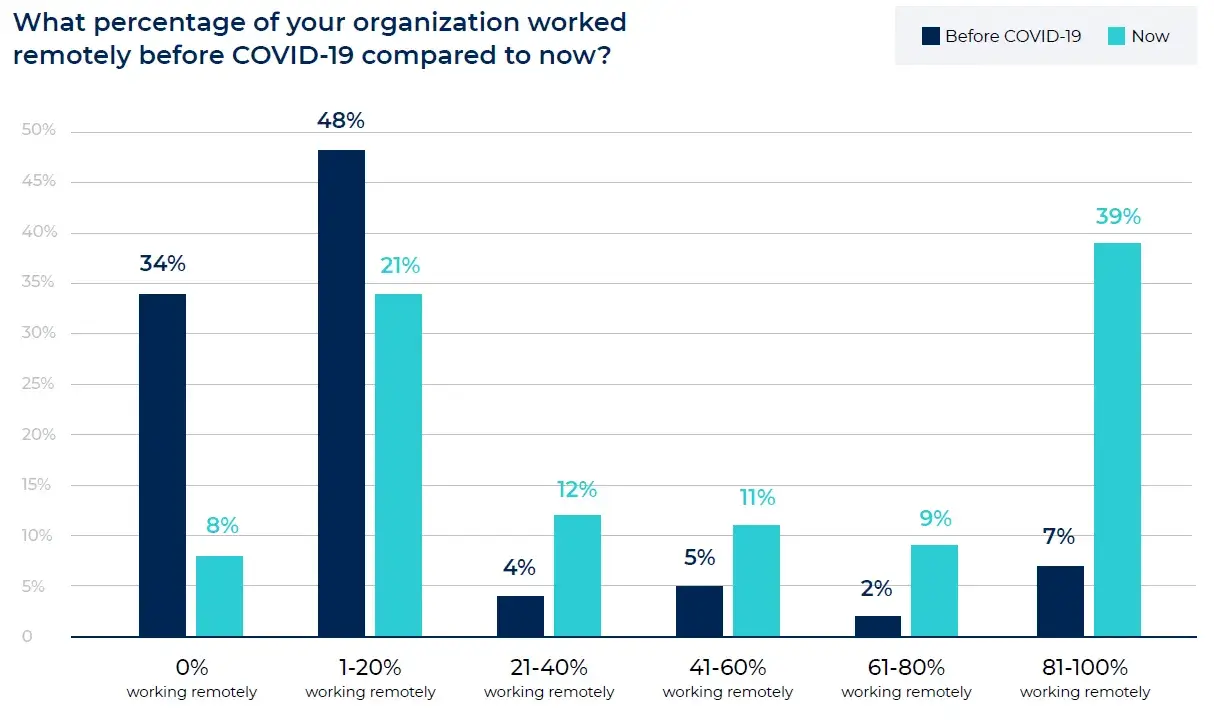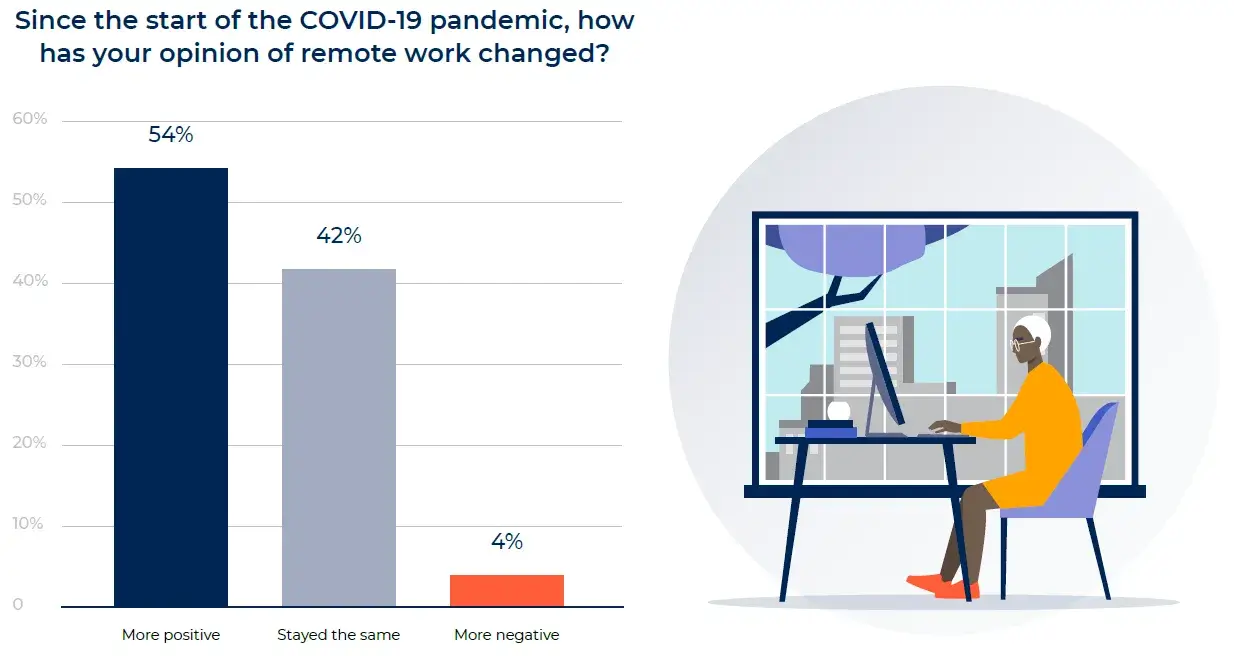We recently released our 2020 Hiring Benchmark Report which shares the results from a survey of over 400 hiring professionals around the world and across a wide range of industries. The survey was administered in August of 2020, well into the global pandemic that has defined the course of the year.
One of the biggest consequences of COVID-19 was a dramatic shift to remote work. According to our survey, 69% of organizations transitioned to remote work to some extent as a result of the pandemic. But we were especially interested to see how much things have changed from last year and how our respondents were feeling about it. We dug into the data a little further, and here’s the first thing we found:

What we see in this graph is a dramatic shift in remote work from before and after COVID-19. Overwhelmingly, most organizations were operating with largely in-person workforces prior to the pandemic. The navy-blue bars in the graph above represent pre-COVID times, where we see that 34% of organizations were operating with entirely in-person teams, and 48% had less than 20% of their teams working remotely.
When contrasted to today, the differences are stark. Just 8% of organizations are still operating on an in-person basis, and this is most likely due to the nature of the industry. Some roles simply cannot operate remotely. But largely we see that organizations that CAN work remotely have shifted in that direction. Now, a full 39% of organizations are operating nearly entirely remotely, with 81-100% of their teams working at home.
What is clear from this graph is that, while the numbers have shifted dramatically, remote work is by no means new. Remote work has always been part of the discourse, and organizations were certainly operating with small percentages of remote workers prior to COVID-19. But before the pandemic forced organizations to work remotely at scale, organizations viewed remote work with some skepticism and a good amount of resistance.
Whether they like it or not, organizations have been forced to dive right into the deep end of remote work. So now that they’ve tried it, how do they feel about it?
The response to remote work is overwhelmingly positive.
In our survey, we wanted to ask hiring professionals how their opinion of remote work has changed. Here’s what we found:

54% of respondents said that they feel more positive about remote work now than before COVID-19. 42% said their opinions stayed the same. And a tiny minority, 4%, feel more negative now. With results like these, it seems as if this great experiment was a relative success.
These sentiments are being reflected by the many organizations that have chosen to make the transition to remote work permanent. Notable companies such as Twitter, Square, Slack, and Box have stated an intention to allow employees to work from home indefinitely if the job allows it. And it’s likely that others will follow suit. Many other organizations have extended their remote work policies well into July of 2021.
Ultimately, COVID-19 has accelerated the acceptance of remote work as a productive way to conduct business. It remains to be seen how much remote work will stick around in a post-COVID world. Will remote work become the new norm? Or will in-person workplaces return as the favored way to conduct business? Amidst an exceptionally unpredictable year, only time will tell.
Download the 2020 Hiring Benchmark Report for more data on hiring during 2020.





